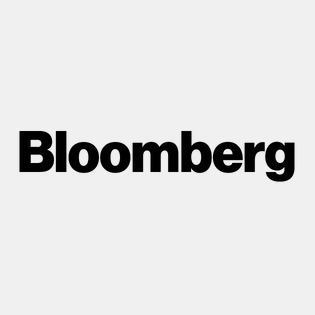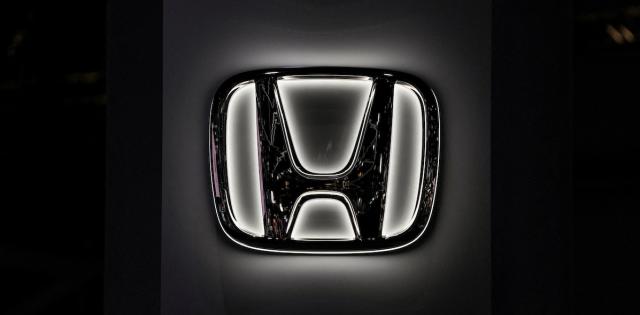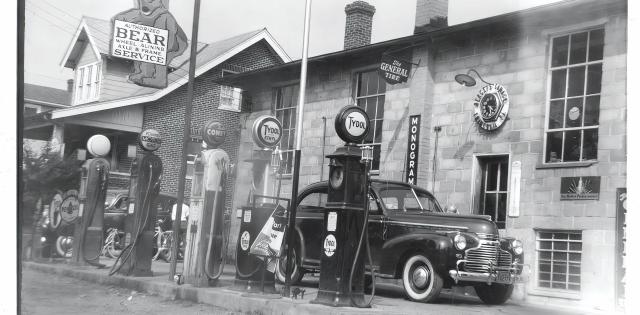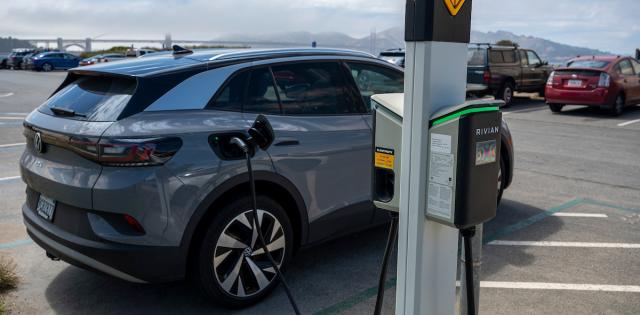The article below is sourced from Bloomberg Wire Service. The views and opinions expressed in this story are those of the Bloomberg Wire Service and do not necessarily reflect the official policy or position of NADA.
Honda Motor Co. is trying to crack into the US market for electric vehicles with a new model and an old strategy: If you can’t beat ’em, join ’em.
The Japanese carmaker unveiled the brand’s first electric SUV on Thursday, marking a renewed push into fully electric vehicles to complement its hot-selling gas-electric hybrids. But the 2024 Prologue is only a half-step in Honda’s broader EV efforts. Co-developed with General Motors Co., it’s being built in a GM plant and shares key parts with GM models, including its Ultium batteries.
“We were able to leverage leading, state-of-the-art EV hardware to accelerate development,” John Hwang, the Prologue’s development leader, told reporters at a briefing in suburban Detroit.
The mid-size SUV — and its upscale sibling, the Acura ZDX — are placeholders until the company starts making EVs at its facilities in Ohio using batteries from a newly constructed $4.4 billion joint-venture factory with LG Energy Solution Ltd. Using batteries from the JV, Honda plans a series of new electric models with production starting in late 2025.
The rollout of the Prologue marks an about-face by Honda, which just last year doubted the extent to which American car buyers are interested in EVs. Chief Executive Officer Toshihiro Mibe now plans to sell 30 new battery-electric models globally — and deliver almost 500,000 EVs in North America alone — by 2030.
The company has had difficulty with previous fully electric forays into the US, having introduced and withdrawn three different EVs from the late 1990s through 2020. All of those models were made in Japan, unlike the Prologue and ZDX. Honda has declined to disclose which GM plant is manufacturing these vehicles, saying only that they’re being made in North America.
With an estimated 300 miles per battery charge and a price tag in the high-$40,000 range, the Prologue is comparable to Tesla Inc.’s Model Y. Honda sees its main competition as other Asian brand EVs, including the Nissan Ariya, Toyota bZ4X, Hyundai Ioniq 5 and Kia Niro.
But its primary role may be to keep existing Honda buyers from fleeing the brand in search of a fully electric model.
“This car is more targeted at Honda loyalists who’ve been waiting — or maybe who’ve already defected,” said Rob Keogh, a product planning manager at Honda in charge of EVs.
It’s not viewed as a niche product. Honda officials say they expect US sales, which start in early 2024, of as many as 40,000 units in the Prologue’s debut year. The company aims to grow deliveries of the vehicle to some 70,000 a year.
“We’re confident it’s going to do very well in the marketplace,” Mamadou Diallo, Honda’s US sales chief, said in an interview, noting the brand’s success with hybrid models that now account for almost one-fifth of its sales in the US.
“The kind of volume we’re doing with hybrids really sets the tone for our future EVs,” he said.
The Prologue’s styling is a departure for Honda due in part to its reliance on GM’s architecture. The GM partnership has been five years in the making, but the decision to localize battery output calls into question a broader plan to use GM batteries and vehicle platforms.
A Honda spokesman said the company had no additional news to share on co-development projects with GM.
Looking something like a cross between a Chevrolet Blazer and a Subaru Outback, the word “Honda” is displayed in large letters on its backside — unlike any of the brand’s other vehicles — to help people identify it.
“If anyone ever asks ‘what’s that?’ it says Honda right across the tailgate,” Keogh said.
For more stories like this, bookmark www.NADAheadlines.org as a favorite in the browser of your choice and subscribe to our newsletter here:












